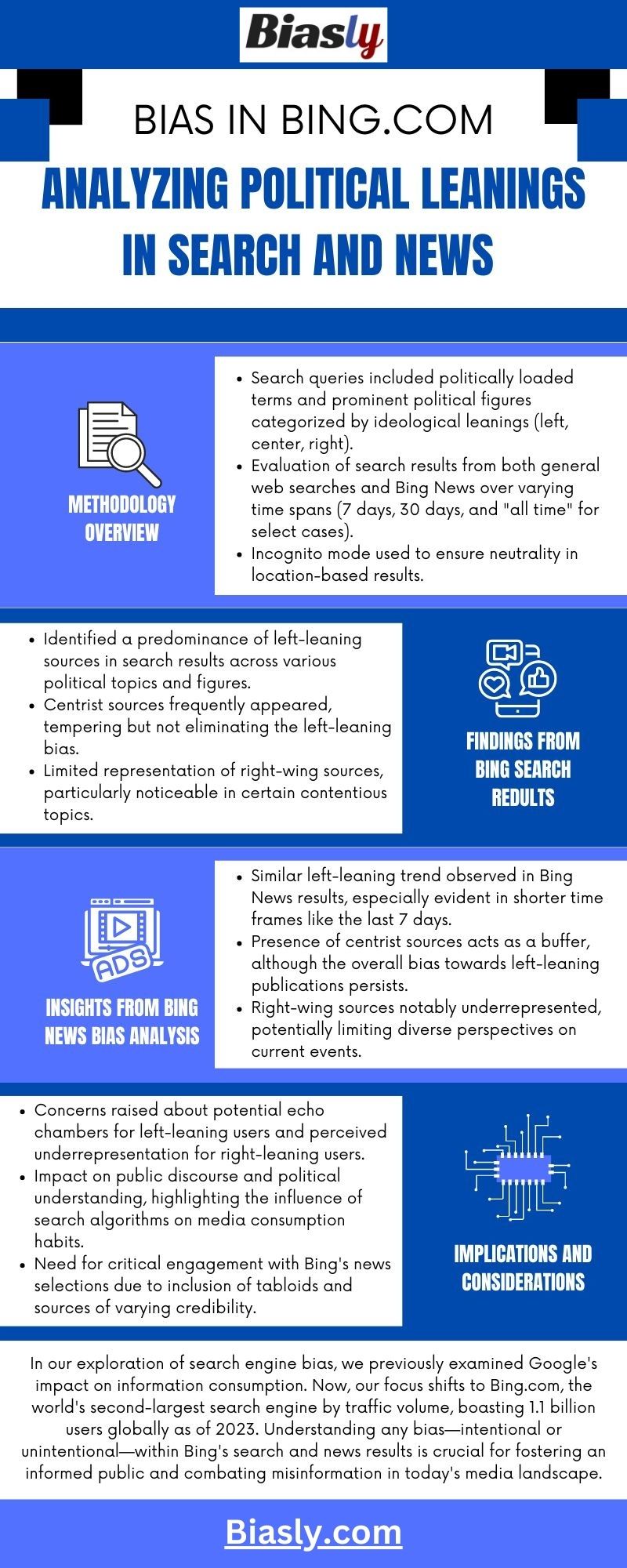
In a previous article on this website, we covered the bias of Google and Google News as part of our mission to inform the public about the bias of the site’s search results. Now, we will focus on Bing.com, the second-largest browser in terms of traffic around the world. It has 1.1 billion users as of 2023 with its largest markets being population giants predominantly in the United States, India, and Brazil as its largest markets.
Thus, determining the type of bias, intentional or otherwise in the 2nd most popular search engine is important for helping the public to curate a fair and unbiased view of the world, in addition to enlightening them as to the media they consume. Through this, we can help stop the spread of disinformation and echo chambers that permeate the modern media landscape to help create universal truths and a healthy political dialogue.
Our Approach to Analyzing Bing for Bias
Now, how might one determine if there is bias on Bing? In this study, we chose to observe the bias in three tiers. The first was using the search engine to search for particular political terms such as abortion, privacy rights, and social security, in addition to politicians and political figures of the current landscape.
These topics were first categorized by how they might be spoken of in the media from the left, right, or centrist perspective, with politicians being organized based on their ideological leanings. These loaded bias leanings were taken from the first three “pages” of the results with the media outlet or publication being placed into their political leaning category based on Biasly’s discerning and state-of-the-art AI along with independent analysis by the researcher.
Next, we searched the results of Bing’s News, choosing to analyze the results published within the last 7 days to determine which sources, however obscure, were being displayed by the site’s algorithm.
These sources, just like the first one, were categorized by political leaning, but this is where one had to get creative. Just like doom scrolling on Instagram, the Bing news page too is infinite, thus leaving one to have to redefine the concept of “pages”. Therefore, we determined to take every 10 sources and turn those into our substitute pages.
Finally, there was yet a third result of doing the same thing from the Bing News page. This time, however, the limit for stories was extended from 7 days to 30, so that we could hopefully have a better data set of sources to analyze rather than the opportunism that is practiced by the daily news cycle.
For some search results though, this limit was extended to “all time” to broaden sources and increase their relevance, but this will be discussed later. All of this was aggregated together by our analyst to create what we believe to be an accurate representation of Bing’s media bias.
All searches were done in incognito mode with a location set to the general United States without selecting a state or postcode, in particular, to make the results as neutral as possible.
Something Weird Found in Bing News
As an aside, one of the more interesting parts of Bing’s News’ bias analysis was the repeated intrusion of tabloids and obscure publications when it came to the search results. Our researcher found such sources as The Liberation (a Far-Left publication), Slingshot News (a Right-Wing content reposter), People Magazine (a celebrity publication), Jalopnik (a site about cars), and The National (Right-Wing publication funded by the United Arab Emirates).
These sources may provide an interesting perspective in terms of giving multiple narratives, but their clear bias and possible lack of journalistic integrity renders their service as news sources rather moot.
As such, searching Bing for news becomes either a cursory affair in discovering the news of the day, or a deep dive into the depths of the obscure and the partisan which may end up causing more harm than good.
Is Bing Search Biased?
With all the data aggregated, our research team’s data has concluded that the Bing Search results displays a Left-leaning bias, which we will demonstrate through our empirical evidence below.
In both of our studies, we identified publications known to embody Left, Center, or Right political bias. We observed that Right-wing sources were less frequently represented compared to Center or Left-wing publications in Bing Search results. While Center sources frequently topped the results, the chart below illuminates a distinct disparity in the number of Left sources displayed in the search results versus Right-Wing sources.
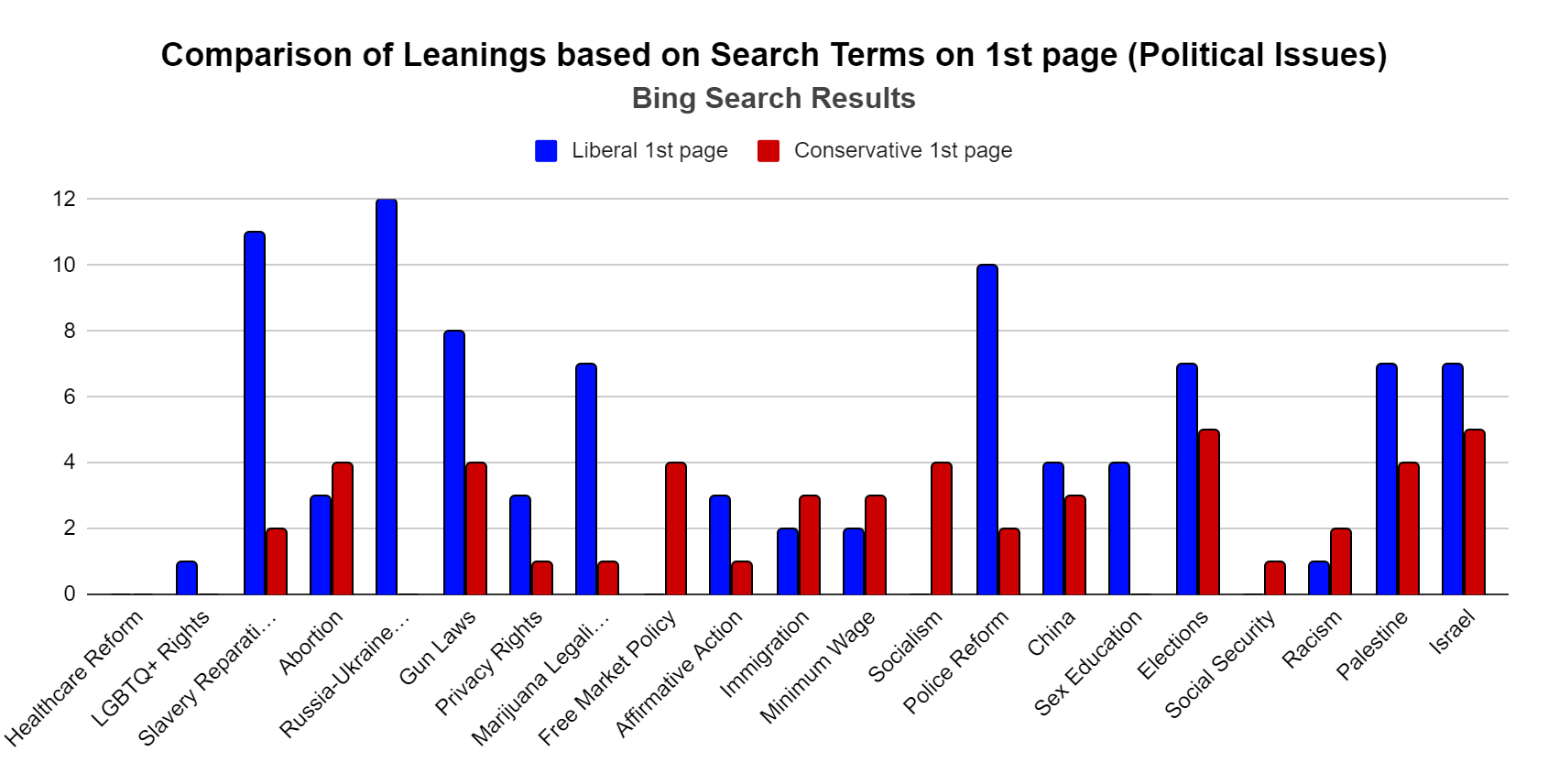
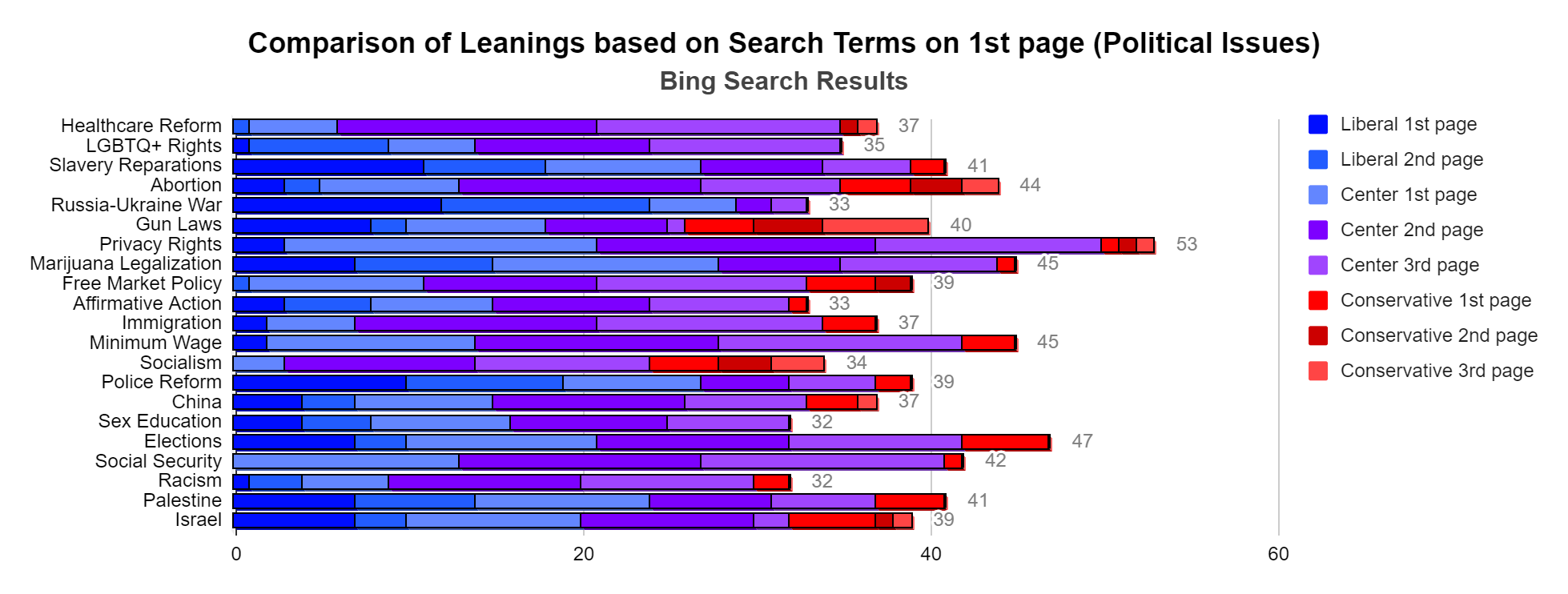


Is Bing News Biased?
To perhaps no surprise, the Left-leaning trend present on the search results page also manifested itself on the News page. As mentioned before, we used both 7 and 30 day results for topics and political figures to confirm whether or not the bias was more present over select periods of time.
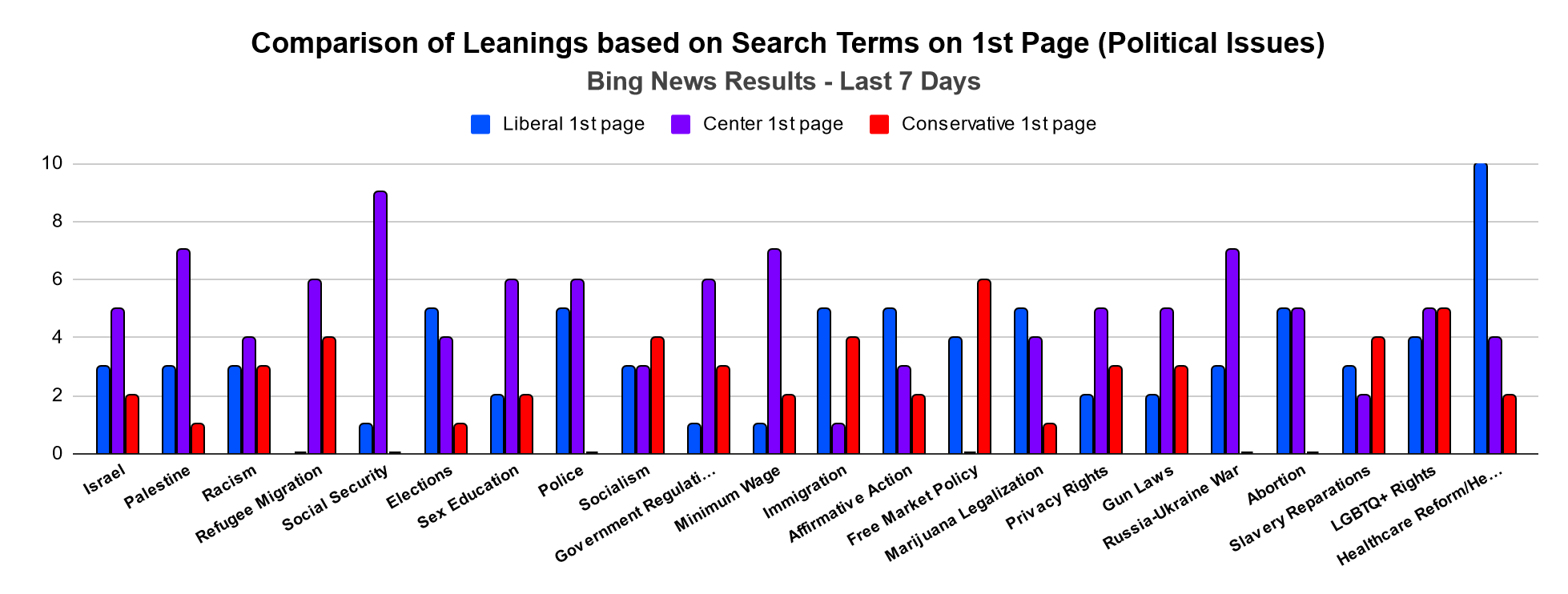
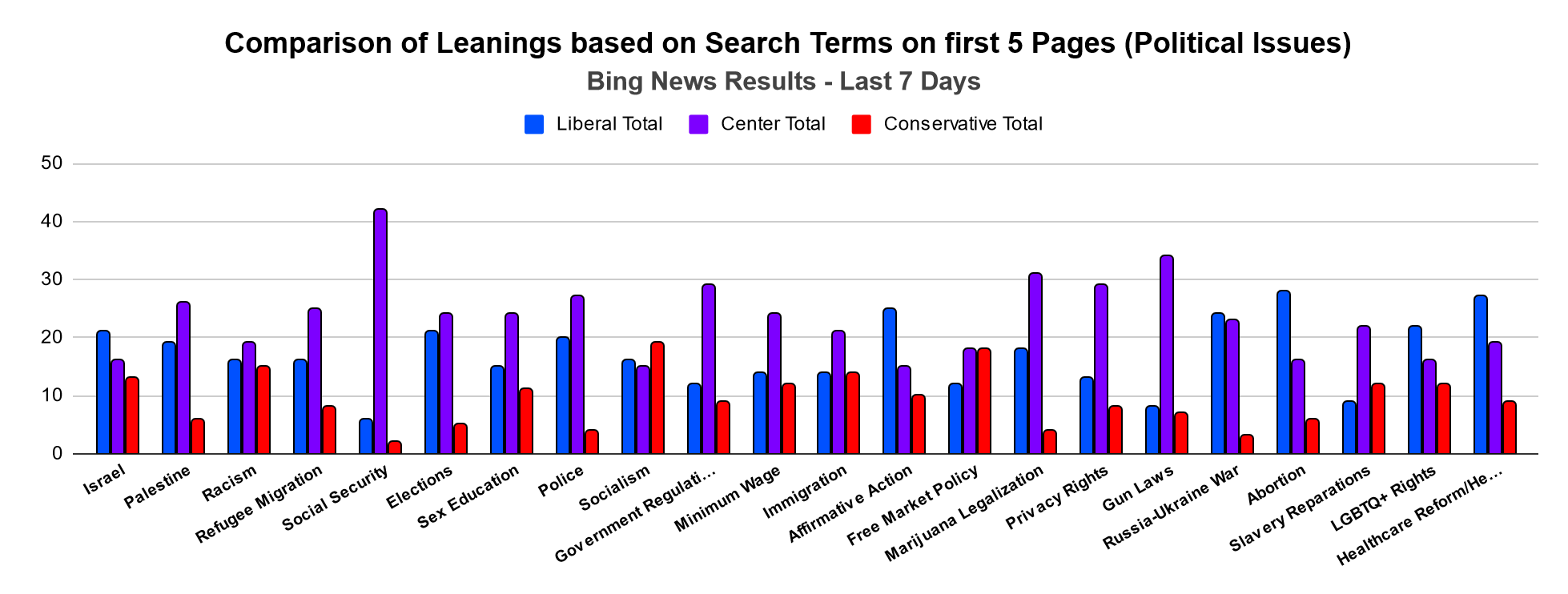
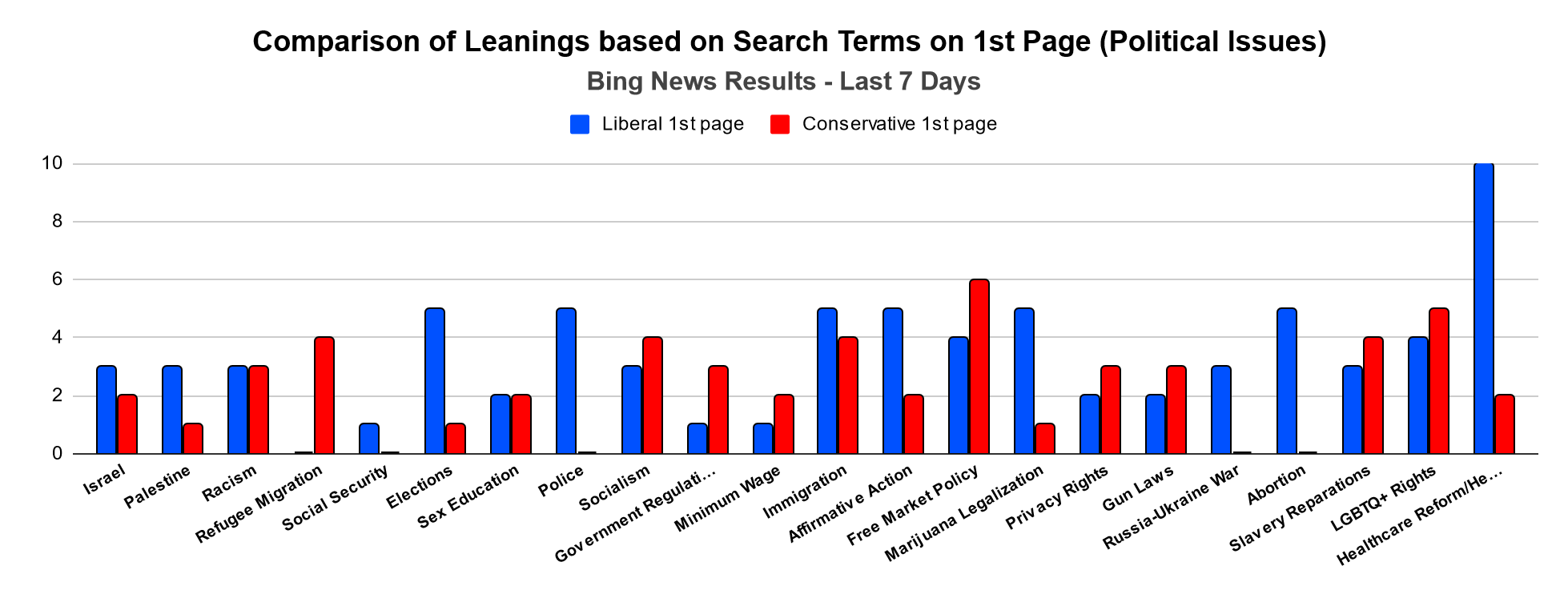

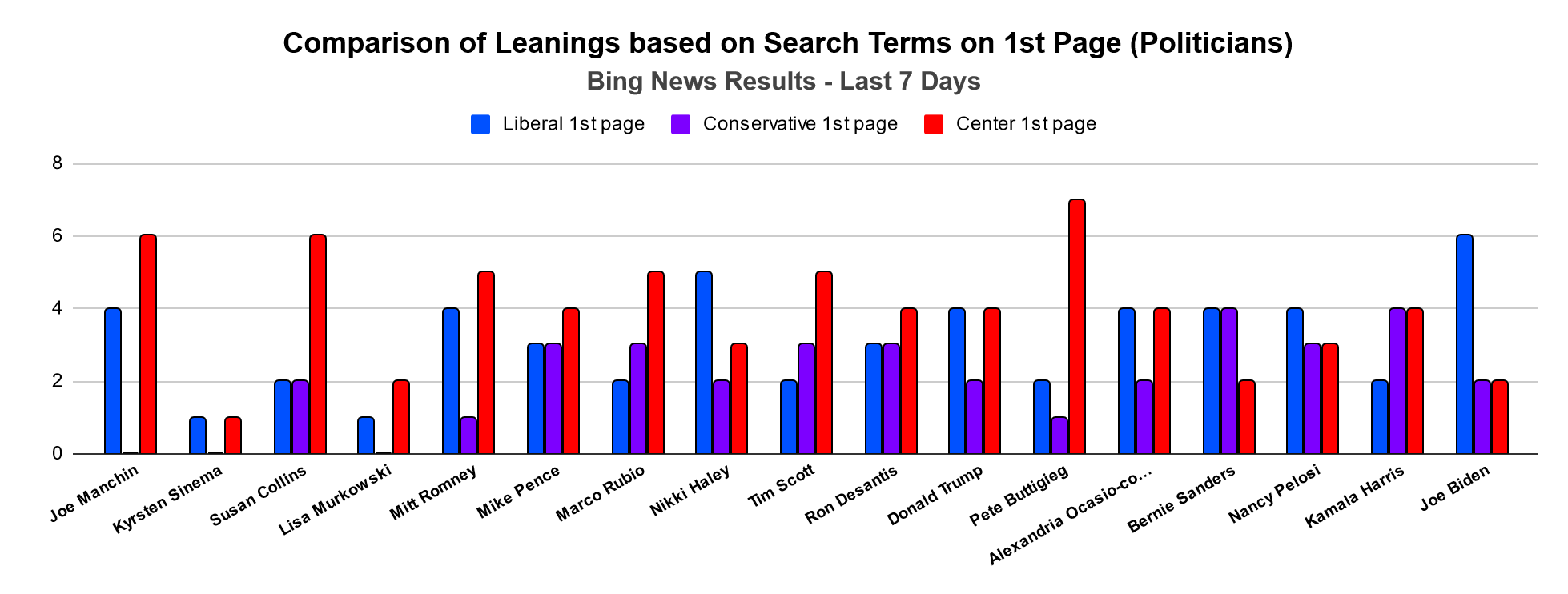

This trend continues as well for the 30-day results, where Center results were center stage, but Right-Wing sources were often hardly included, both in terms of political issues and politicians.
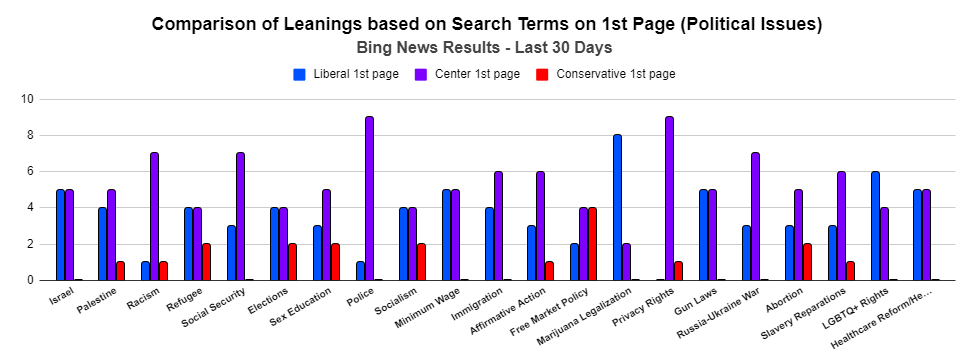
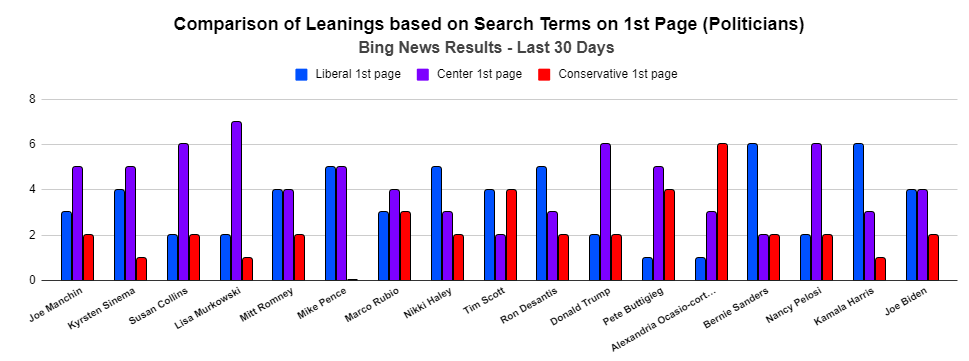
This was also the case with the front page of the Bing News page, thus establishing a left-center bias in terms of sources provided for all issues, even those that were ideologically hot-button topics or buzzwords for right-wing sources such as Gun Rights and Socialism.
What did we learn and why does it matter?
At the risk of repetition, our team has found that in the case of Bing Search and Bing News, both show a Left-leaning bias when it comes to the sources shown for both political topics and political figures.
That is not to say that there was no representation, and in fact there were some subjects and figures that were covered more by Right publications than Left-leaning ones. For the search results, this was Free Market Policy and Socialism, while for the 7-day news results also had Free Market Policy and Socialism with the addition of Slavery Reparations as having a majority of Right-Wing sources. For the 30-day results, this was only the case for Slavery Reparations.
The same bias exists when examining politicians. Of those searched, even for figures on the political Right, were predominantly represented and reported on by Left-wing sources. The only exceptions accounted for were Tim Scott and Alexandria Ocasio Cortez. The former was covered by a majority of Right-Wing sources across the 7-day Bing News, while the latter experienced the same coverage in the 30-day Bing News cycle compared to the other political leanings.
While perhaps acceptable for some, the scarcity of conservative sources is concerning for two reasons:
- First, for Left-leaning individuals, this potentially creates an echo chamber, hindering exposure to diverse opinions that could lend more depth to their understanding of political issues or current events.
- Second, Right-leaning individuals may feel discouraged from reading and engaging with these issues, perceiving an underrepresentation or censorship.
In this context, the lack of Right-wing sources could deter readers from using Bing, and by extension, from encountering other sources that could help them gain a broader view of the political landscape. The presence of centrist sources, however, prevents this issue from becoming a purely partisan binary.

Given Bing’s usage of tabloids and some sources of questionable credibility in its news selections, it’s necessary to approach the site’s information, particularly in the news section, with a critical eye.
Nonetheless, this serves as an invaluable case study on how to detect and learn from bias, and how even platforms that don’t directly produce news, but rather search results, can still influence what we see and the conversations we engage in.
By displaying this bias, Bing unintentionally undermines the online media realm. However, optimistically, it will evolve to become a genuine news provider that can enlighten its users without falling prey to partiality.
